Do you have a question about the Gigabyte H470 HD3 and is the answer not in the manual?
Covers the manual's copyright status and disclaimer regarding product information.
Guides users on how to find the revision number of their motherboard.
Lists the items included in the motherboard package.
Provides essential safety and handling guidelines before installing hardware.
Details the supported CPU, chipset, and memory module specifications.
Outlines the integrated graphics, audio codec, and LAN chip specifications.
Describes the available expansion slots and multi-graphics technology support.
Details storage connectors (SATA, M.2) and USB port specifications.
Provides an overview of internal and back panel connector types.
Covers I/O controller, hardware monitor, and BIOS features.
Details bundled software, operating system support, and form factor.
Step-by-step guide for correctly installing the CPU into the socket.
Explains dual channel memory setup and recommended configurations.
Describes the USB 2.0/1.1 and PS/2 keyboard/mouse ports.
Details the analog D-Sub and digital DVI-D video output ports.
Covers USB 3.2 Gen 1 and Gen 2 Type-A and Type-C port specifications.
Details the HDMI, USB Type-C, and RJ-45 Gigabit LAN ports.
Explains the Q-Flash Plus USB port and audio jack configurations.
Covers internal power, fan, and storage connectors like ATX, SATA, M.2.
Details internal USB, audio, and front panel headers for connectivity.
Explains headers for system status LEDs, debugging, and clear CMOS.
Details the 2x4-pin ATX 12V and 2x12-pin main power connectors.
Explains the 4-pin CPU and system fan headers for cooling control.
Details the header for connecting RGB LED strips (12V/G/R/B).
Details the header for connecting addressable LED strips.
Details the header for connecting a Trusted Platform Module (TPM).
Describes connectors for GIGABYTE Thunderbolt add-in cards.
Explains the CMOS battery function and replacement.
Describes the LEDs indicating CPU, DRAM, VGA, and BOOT status.
Describes the initial GIGABYTE logo screen during system boot.
Explains the structure of the BIOS Advanced Mode main menu.
Lists and describes the function keys for BIOS navigation.
Adjusts CPU clock ratio, ring ratio, IGP ratio, and AVX offset.
Configures CPU temperature protection, FCLK, and core enabling.
Manages Intel Virtualization and Speed Shift technologies.
Configures CPU thermal monitoring and core ratio controls.
Controls CPU power saving modes and Turbo Boost technologies.
Manages CPU C-states for power saving in halt states.
Sets CPU and DRAM power limits for Turbo mode.
Enables or disables XMP for enhanced memory performance.
Configures memory multiplier, interleaving, and boot modes.
Fine-tunes memory timings and performance enhancement settings.
Adjusts memory channel timings, voltages, and displays SPD info.
Manages platform power states and Active State Power Management (ASPM).
Configures system power-on behavior via keyboard or mouse.
Controls system power states (S5) and wake-up events (Resume by Alarm).
Configures initial display output and DVMT pre-allocated memory.
Manages aperture size, audio controller, and above 4G decoding.
Configures onboard LAN, USB features, and serial port.
Enables or disables network booting features like PXE and HTTP.
Manages network boot options and PXE wait time.
Configures SATA controllers, modes (AHCI/RAID), and hot plug.
Provides Intel Ethernet info and miscellaneous settings like system LEDs.
Controls system LEDs and manages Intel PTT, SGX, and Trusted Computing.
Configures link speed, 3DMark enhancement, and monitors system voltages.
Sets fan speed control, modes (Auto, Voltage, PWM), and fan stop.
Monitors temperatures, fan speeds, and configures warning thresholds.
Displays detailed information about BIOS version and system hardware.
Allows selection of BIOS language and manual system time setting.
Configures NumLock state, security options, and boot logo display.
Sets boot order, Fast Boot, SATA support, and VGA support options.
Manages USB and PS/2 device support during boot.
Configures network boot, storage controller options, and PCI devices.
Sets administrator and user passwords for BIOS access.
Manages Secure Boot and preferred BIOS entry mode (Easy/Advanced).
Options to save changes and exit, or exit without saving.
Allows loading default settings and saving/loading custom BIOS profiles.
Summarizes different RAID levels, minimum drives, and fault tolerance.
Guides on configuring SATA controller mode and setting up RAID arrays.
Step-by-step instructions for configuring RAID using the EZ RAID feature.
Details UEFI and legacy RAID ROM configuration methods.
Instructions for installing Intel Optane Memory in AHCI mode.
Instructions for installing Intel Optane Memory in Intel RST Premium mode.
Guide to installing motherboard drivers using the Xpress Install utility.
Statements regarding compliance with FCC and Canadian regulations.
Information on EU CE, RoHS, and WEEE directives compliance.
Provides link and information for submitting technical or sales questions.
Covers the manual's copyright status and disclaimer regarding product information.
Guides users on how to find the revision number of their motherboard.
Lists the items included in the motherboard package.
Provides essential safety and handling guidelines before installing hardware.
Details the supported CPU, chipset, and memory module specifications.
Outlines the integrated graphics, audio codec, and LAN chip specifications.
Describes the available expansion slots and multi-graphics technology support.
Details storage connectors (SATA, M.2) and USB port specifications.
Provides an overview of internal and back panel connector types.
Covers I/O controller, hardware monitor, and BIOS features.
Details bundled software, operating system support, and form factor.
Step-by-step guide for correctly installing the CPU into the socket.
Explains dual channel memory setup and recommended configurations.
Describes the USB 2.0/1.1 and PS/2 keyboard/mouse ports.
Details the analog D-Sub and digital DVI-D video output ports.
Covers USB 3.2 Gen 1 and Gen 2 Type-A and Type-C port specifications.
Details the HDMI, USB Type-C, and RJ-45 Gigabit LAN ports.
Explains the Q-Flash Plus USB port and audio jack configurations.
Covers internal power, fan, and storage connectors like ATX, SATA, M.2.
Details internal USB, audio, and front panel headers for connectivity.
Explains headers for system status LEDs, debugging, and clear CMOS.
Details the 2x4-pin ATX 12V and 2x12-pin main power connectors.
Explains the 4-pin CPU and system fan headers for cooling control.
Details the header for connecting RGB LED strips (12V/G/R/B).
Details the header for connecting addressable LED strips.
Details the header for connecting a Trusted Platform Module (TPM).
Describes connectors for GIGABYTE Thunderbolt add-in cards.
Explains the CMOS battery function and replacement.
Describes the LEDs indicating CPU, DRAM, VGA, and BOOT status.
Describes the initial GIGABYTE logo screen during system boot.
Explains the structure of the BIOS Advanced Mode main menu.
Lists and describes the function keys for BIOS navigation.
Adjusts CPU clock ratio, ring ratio, IGP ratio, and AVX offset.
Configures CPU temperature protection, FCLK, and core enabling.
Manages Intel Virtualization and Speed Shift technologies.
Configures CPU thermal monitoring and core ratio controls.
Controls CPU power saving modes and Turbo Boost technologies.
Manages CPU C-states for power saving in halt states.
Sets CPU and DRAM power limits for Turbo mode.
Enables or disables XMP for enhanced memory performance.
Configures memory multiplier, interleaving, and boot modes.
Fine-tunes memory timings and performance enhancement settings.
Adjusts memory channel timings, voltages, and displays SPD info.
Manages platform power states and Active State Power Management (ASPM).
Configures system power-on behavior via keyboard or mouse.
Controls system power states (S5) and wake-up events (Resume by Alarm).
Configures initial display output and DVMT pre-allocated memory.
Manages aperture size, audio controller, and above 4G decoding.
Configures onboard LAN, USB features, and serial port.
Enables or disables network booting features like PXE and HTTP.
Manages network boot options and PXE wait time.
Configures SATA controllers, modes (AHCI/RAID), and hot plug.
Provides Intel Ethernet info and miscellaneous settings like system LEDs.
Controls system LEDs and manages Intel PTT, SGX, and Trusted Computing.
Configures link speed, 3DMark enhancement, and monitors system voltages.
Sets fan speed control, modes (Auto, Voltage, PWM), and fan stop.
Monitors temperatures, fan speeds, and configures warning thresholds.
Displays detailed information about BIOS version and system hardware.
Allows selection of BIOS language and manual system time setting.
Configures NumLock state, security options, and boot logo display.
Sets boot order, Fast Boot, SATA support, and VGA support options.
Manages USB and PS/2 device support during boot.
Configures network boot, storage controller options, and PCI devices.
Sets administrator and user passwords for BIOS access.
Manages Secure Boot and preferred BIOS entry mode (Easy/Advanced).
Options to save changes and exit, or exit without saving.
Allows loading default settings and saving/loading custom BIOS profiles.
Summarizes different RAID levels, minimum drives, and fault tolerance.
Guides on configuring SATA controller mode and setting up RAID arrays.
Step-by-step instructions for configuring RAID using the EZ RAID feature.
Details UEFI and legacy RAID ROM configuration methods.
Instructions for installing Intel Optane Memory in AHCI mode.
Instructions for installing Intel Optane Memory in Intel RST Premium mode.
Guide to installing motherboard drivers using the Xpress Install utility.
Statements regarding compliance with FCC and Canadian regulations.
Information on EU CE, RoHS, and WEEE directives compliance.
Provides link and information for submitting technical or sales questions.
| Cables included | SATA |
|---|---|
| Bundled software | Norton Internet Security (OEM) cFosSpeed |
| Audio chip | Realtek ALC887 |
| Component for | PC |
| Motherboard chipset | Intel H470 Express |
| PC health monitoring | FAN, Temperature, Voltage |
| Audio output channels | 7.1 channels |
| Motherboard form factor | ATX |
| Motherboard chipset family | Intel |
| BIOS type | UEFI AMI |
| ACPI version | 5.0 |
| BIOS memory size | 256 Mbit |
| Clear CMOS jumper | Yes |
| Desktop Management Interface (DMI) version | 2.7 |
| HDMI version | 1.4 |
| PS/2 ports quantity | 1 |
| USB 2.0 ports quantity | 2 |
| USB 3.2 Gen 1 (3.1 Gen 1) Type-A ports quantity | 4 |
| USB 3.2 Gen 1 (3.1 Gen 1) Type-C ports quantity | 0 |
| Number of SATA III connectors | 6 |
| RAID levels | 0, 1, 5, 10 |
| Supported storage drive types | HDD & SSD |
| Supported storage drive interfaces | SATA III |
| Maximum resolution | 4096 x 2160 pixels |
| Maximum graphics card memory | 512 MB |
| Parallel processing technology support | 2-Way CrossFireX, Quad-GPU CrossFireX |
| Wi-Fi | No |
| Ethernet interface type | Gigabit Ethernet |
| Memory channels | Dual-channel |
| Memory slots type | DIMM |
| Supported memory types | DDR4-SDRAM |
| Maximum internal memory | 128 GB |
| Supported memory clock speeds | 2133, 2400, 2666, 2933 MHz |
| Processor socket | LGA 1200 (Socket H5) |
| Compatible processor series | Intel Celeron, Intel Core i3, Intel Core i5, Intel Core i7, Intel Core i9, Intel Pentium |
| Depth | 225 mm |
|---|---|
| Width | 305 mm |


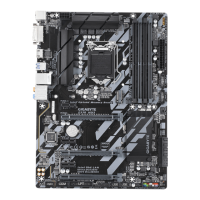
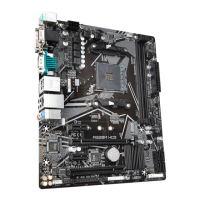
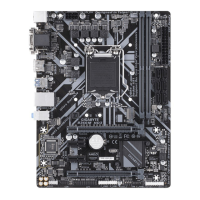
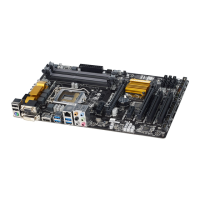
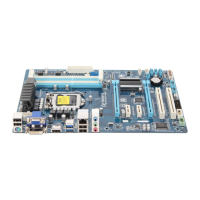
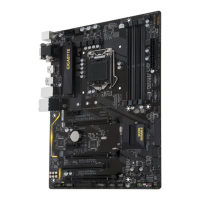
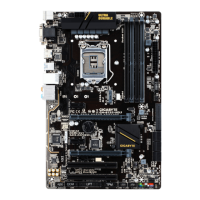
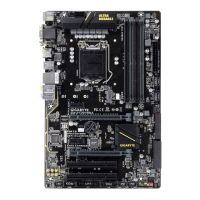
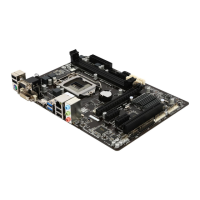
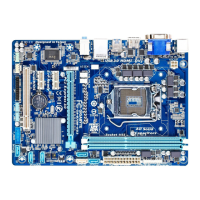
